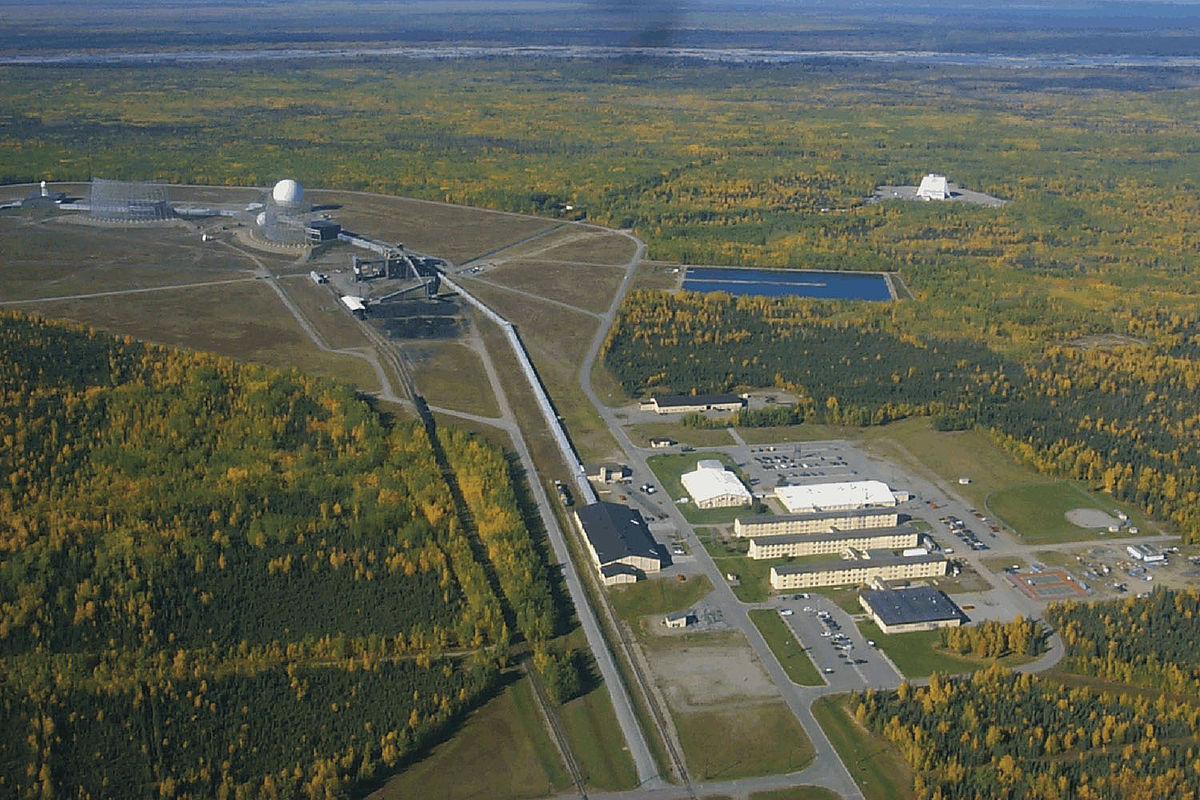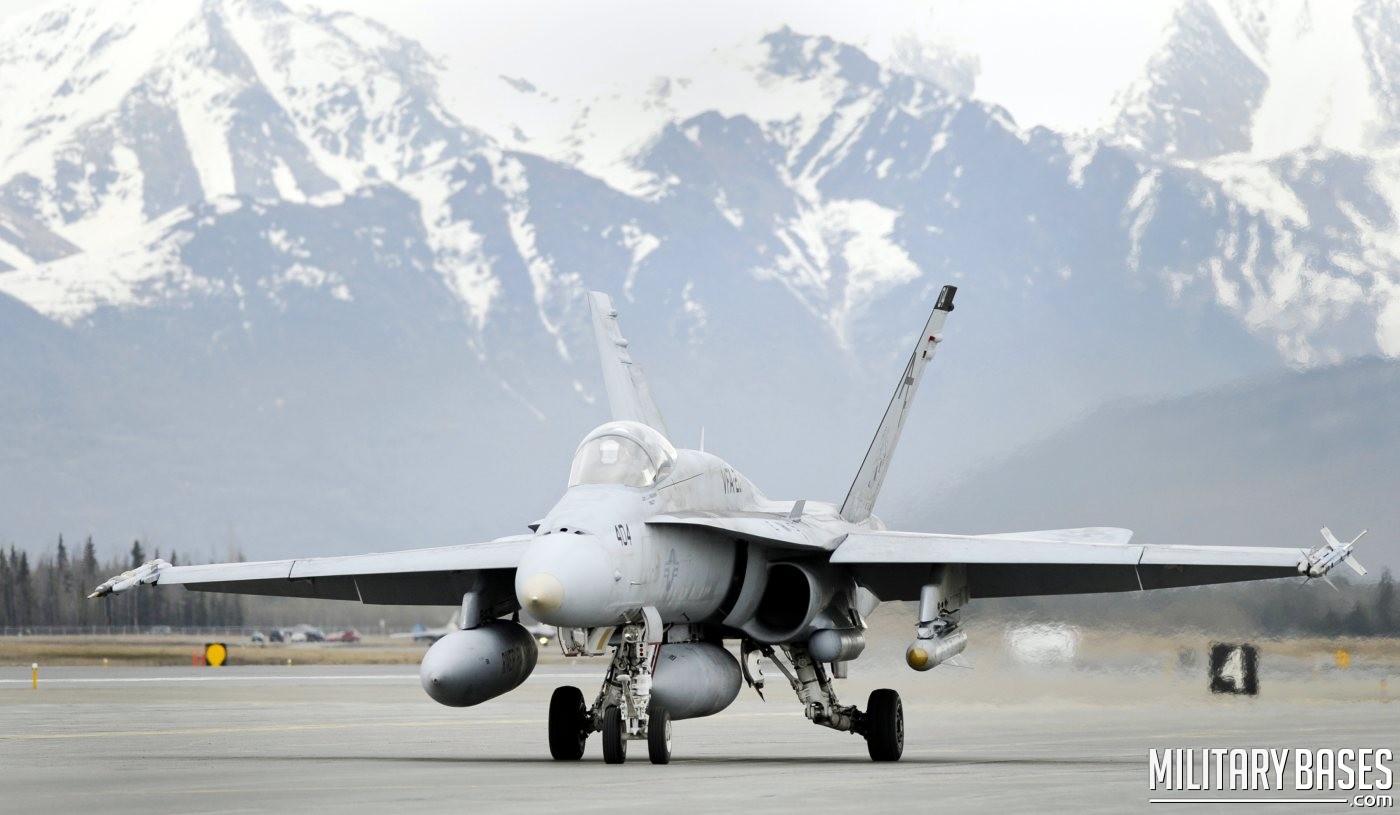Alaska Air Force Bases - An A-10 Thunderbolt II aircraft of the 25th Fighter Squadron taxis during exercise Red Flag-Alaska 21-02 at Ellison Air Force Base, Alaska, June 14, 2021. (Tech Sgt. Peter Thompson/Air Force One USA)
Red Flag-Alaska, a major Air Force exercise hosted at Joint Base Elmendorf-Richardson, began this week as international partners joined U.S. forces in Anchorage and Fairbanks.
Alaska Air Force Bases

Both the Republic of Korea Air Force and Japan's Air Self-Defense Force have sent troops for the annual exercise, which took place on a limited basis last year.
Eielson Air Force Base: In Depth Welcome Center
"Last year, we did the US-only exercise [Red Flag-Alaska] in August, so this is our first RF-A with an international team," said Lt. Col. Ryan Eads, commanding officer. 354th Task Force with participants, release a news release. "Currently, there is a lot of effort focused on getting rid of the rust and retraining muscle memory to take on great practice with international participants."
The exercise, conducted by Air Force Pacific Command, the air-based command that oversees all Air Force operations in the Asia/Pacific region, will run from June 10 to June 25, and will support more than 1,500 service personnel. . 100 planes., according to the statement.
Serving members of the United States Air Force and the Japan Self-Defense Force, Commanding Forces Commander Col. Brian Cusson, RED FLAG-Alaska 21-2 Joint Base Elmendorf-Richardson, Alaska, to begin June 10, 2021. (Sheila De Vera/US Air Force)
"The real benefit of this 21-2 exercise is the collaboration, cooperation, and strengthening of our alliances with our closest allies in the [Pacific Imaging Region]," Eads said. "The crew will visit them and be tested under a safe, controlled environment to simulate their first ten combat missions."
Photograph Of Elmendorf Air Force Base, Alaska, 1962
The exercise will be held at the Joint Pacific Alaska Range Complex, a large training facility in central Alaska, according to the release. The exercise, which was cut short last year due to the disease outbreak, will continue this year in full expansion, which will include international partners, according to the statement.
Other services have expanded their training in the state, including the Navy and Marine Corps, which recently held Northern Age 2021, involving more than 15,000 sailors, marines and airmen.
U.S. Soldiers assigned to the 1-40th Cavalry, 1st Squadron (Airborne), 25th Infantry Division prepare to jump on June 17, 2021 at Donnelly Training Area in support of Red Flag-Alaska. An F-16 Fighter Falcon from the 18th Aggressor Squadron flies over Eielson AFB in 2009. The base's main hangar, known as the "Thunderdome", is visible in the upper left corner of the photo.

64°39′56″N 147°06′05″W / 64.66556°N 147.10139°W / 64.66556; -147.10139 Coordinates: 64°39′56″N 147°06′05″W / 64.66556°N 147.10139°W / 64.66556; -147.10139
Joint Base Elmendorf Richardson
Eilson Air Force Base (IATA: EIL, ICAO: PAEI, FAA LID: EIL) is a United States Air Force base (USAF) located 26 miles (42 km) southeast of Fairbanks, Alaska, and Moose Creek, Alaska. is It was established in 1943 as a 26-mile satellite field and redesignated Elson Air Force Base on January 13, 1948. It has been a Superfund site since 1989.
Its host unit is the 354th Fighter Wing (354 FW) assigned to the Pacific Air Force's elite air force. The primary mission of the 354 FW is to support RED FLAG-Alaska, a series of air-directed training exercises for US Air Force Pacific Air Command, combined air, intercontinental, close air support, and large-scale operations in simulation. war of war These exercises are conducted over the Joint Alaska Pacific Range (JPARC) with air operations flown from Elmson and its sister base, Elmdorf Air Force Base.
Allison is working to get 54 Lockheed Martin F-35 Lightning II fighter jets assigned to the installation, with the first two arriving on April 21, 2020. The last plane will arrive in April 2022.
The aircraft carries about 3,500 personnel, including airmen and government employees with their families.
Us Misawa Air Base Pilots In Japan Join Live Red Flag Alaska Mission From Virtual Cockpits
The F-35 program increases the number of military personnel at Airson by nearly 50 percent, which is a radical change once it was on the brink of closure.
On June 7, 1943, the Western Defense Command ordered the construction of a new airfield near Fort Wainwright on the first day, named after the United States Army Air Force Base (USAAF) Major Arthur K. Ladd.
Because of the less dangerous roads and wider terrain, surveyors' reports indicated that a location 25 miles southeast of the Army Airfield was the best location for military aircraft. The field became known as "Mile 26" because of its proximity to the US Army Signal Corps telegraph station and the Richardson Highway milepost marker using this designation.

A month later, contractors and civil workers from Ludfield began construction on the new airport. Actual construction began on August 25, 1943. Crews built two parallel rails, 165 feet (50 m) long and 6,625 feet (2,019 m) long. Other facilities include a building, accommodation for 108 officers and 330 personnel, and a storage room. The garrison and airfield are about 600 acres (2.4 km
Eleventh Air Force
The operational benefits of Mile 26 are minimal. The Ladd field served as a consultant site and operations center for the Ladd-Lease program's Alaska-Siberia ferry route. Ld-Lease aircraft occasionally land at Mile 26, but there is no record that Ld-Lease aircraft used the airport to fly to the Soviet Union. Mile 26 closed when the war ended.
The base reopened in September 1946, again as a satellite of Ludfield. The first USAAF task force to which Ellison was assigned was the 57th Fighter Group, equipped with P-38 Lightnings, P/F-51 Mustangs, F-80 Shooting Stars, and F-94 Starfire aircraft. The 57th FG was inactivated on 13 April 1953.
On December 1, 1947, Strategic Air Command B-29 Superfortress bombers of the 97th Bombardment Wing, Heavy, arrived at Mile 26 Field from Smoky Hill Air Force Base, Kansas. The branch reports to the Fifth Air Force, Strategic Air Command (SAC), although its operations are controlled by the Yukon Division of the Alaska Air Force. On March 12, 1948, the Alaska deployment branch moved to Kansas.
A year later Allison moved under the shadow of Ludfield where the Alaskan Air Force assumed organizational control. Also in the fall of 1947, Colonel Jerome B. McCauley became the commander. Mile 26's primary objectives were to support Arctic training for USAF tactical and tactical units, and primarily self-defense.
Why Is The Air Force Sending So Many F 22 And F 35 Fighters To Alaska?
Headquarters USF General Order 2, dated 13 January 1948, redesignated Mile 26 as Eilson Air Force Base. It is named after Carl B. Elson, an Alaskan pioneer who was killed in a 1929 Hamilton H-45 crash along with his mechanic, Earl Borland. Allison and Borland were in the boat trying to fly to the ice-bound ship. . Bering Sea where they were killed. On April 1, 1948, Ellison Air Force Base Wing (Base Complement) was established. The squadron would later be designated the Eilson Air Force Base Bomb Wing, and finally, in January 1949, the 5010th Wing. Col. John L. Needed, who is the base's third commander since Air Force Alaska came under control five months ago, became the first to command the 5010th.
For the next 34 years, the 5010th (also known as the Wing, Composite Wing, Air Base Wing, and eventually, Combat Support Group) served as a squadron at Ellison. In the 1950s, construction in Ellison was rapid. Most of the facilities used today were built during this period, including the Amber Hall, Thunderdome, base exchange, gymnasium, theater, some schools and several dormitories.
The 720th Fighter-Bomber Squadron, equipped with F-86 Sabres, was assigned to Ellison during 1954-55. The 720th is part of the 450th Fighter Bomber Wing based at Foster Air Force Base, Texas. The 720th was replaced by the 455th Fighter Bomber Squadron (323d FBW), based at Bunker Hill Air Force Base, Indiana.

The Air Force sent interceptors to Ellison in the 1960s. 3, the 317th Fighter-Interceptor Squadron from Elmdorf Air Force Base deployed F-102 Delta Daggers and F-106 Delta Darts to the base between 1960 and 1969.
Safer Airspace But More Noise? U.s. Air Force Considers Changing Jet Flight Patterns In Alaska
During the Cuban Missile Crisis of October 1962, Lockheed U-2 pilot Charles Moltsby was reportedly blinded by the Aurora Borealis while collecting radiation from Soviet nuclear tests at the Pole. In Soviet territory, in Chukotka. The plane was intercepted by Soviet MAG interceptors before returning to US territory by nuclear-powered F-102s.
The Cold War saw the vast Eilsen Reserve used as a training area for the US military. In the 1960s the 171st Infantry Brigade (Division) and 172nd Infantry Brigade (Division) both trained here, both regularly and intensively, not for Alaska's defense units. Later in the mid-1970s through the 1980s, the 172nd Infantry Brigade (171st Brigade activated on 13 November 1972), then the 6th Infantry Division which became the 172nd Infantry Brigade
Air force bases locations, air force tacp bases, air force military bases, alaska air force bases maps, us air force bases, air force guard bases, air force reserve bases, air force bases map, closed air force bases, missouri air force bases, air force bases, air force bases alaska
0 Comments